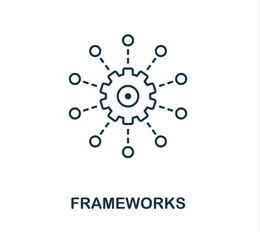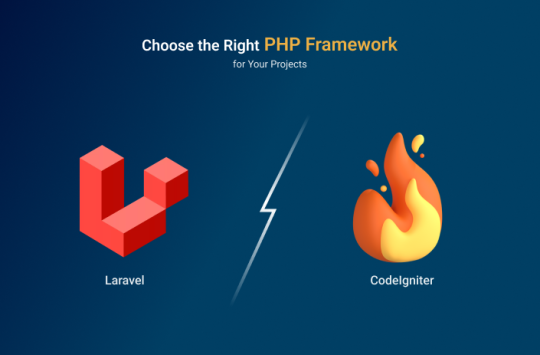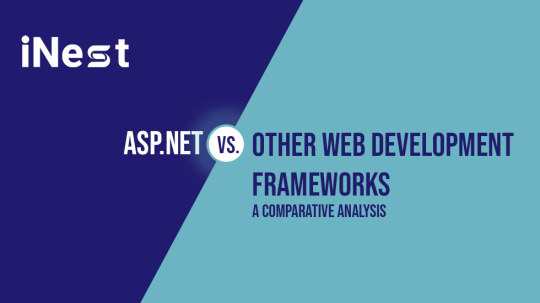#php frameworks developers
Explore tagged Tumblr posts
Text
#php framework#best php framework#best php frameworks#popular php framework#php frameworks developers
0 notes
Text
felt like i was going crazy yesterday trying to set up a login system for this website 😭 it was like i was back in college again!
#im using supabase for auth and i was like someone pls...show me how to do this...with just vanilla js#every tutorial is with like react or next#im trying to do this site with just html css and js (and php)#so i can learn#and later if i wanna move things to a framework i wont be completely lost if something breaks!#but yea i pretty much settled on like using react for part of the website so i can get this login set up#i found some videos and articles so im pretty sure its possible#other options is to use the archived js example i finally found for supabase auth but#it scares me that its archived#fingers crossed next time i code this works#i think this has to be the hardest part of the coding#i wish i could do my own auth thing but thats super dangerous as a beginner#anyways if i get stuck again ill just try the archived js example#and if im still stuck...#idk find another auth thing to use ig#BF RALLY WILL HAPPEN IT WILL#if it doesnt it means i died or someshit lol#but yea im mainly just like ugh about react cause i seriously dont need all those libraries added rn#this sites not supposed to be that complicated imo like yea its dynamic but its like a neopets like thing#the partial react thing doesnt rely on installing a bunch of stuff (i think)#so maybe we r good#????#web development#webdev#coding#codebreakers#if someone has the magic video to hand hold me through these pls send lol
2 notes
·
View notes
Text
Laravel development services offer a myriad of benefits for businesses seeking efficient and scalable web solutions. With its robust features, Laravel streamlines development processes, enhancing productivity and reducing time-to-market. From built-in security features to seamless database migrations, Laravel ensures smooth performance and maintenance. Its modular structure allows for easy customization, making it a preferred choice for creating dynamic and high-performance web applications.
2 notes
·
View notes
Text
Desentrañando los Frameworks: La Poderosa Infraestructura que Impulsa el Desarrollo de Software

Un Framework es un conjunto de herramientas, bibliotecas y convenciones que proporciona una estructura básica para el desarrollo y la implementación de software. Es un esqueleto predefinido que facilita la creación y organización de aplicaciones al proporcionar bloques de construcción reutilizables.
En el desarrollo de software, un framework proporciona una infraestructura genérica que los desarrolladores pueden personalizar para crear aplicaciones específicas. Esto ayuda a acelerar el proceso de desarrollo, ya que los desarrolladores no tienen que comenzar desde cero, sino que pueden aprovechar las funcionalidades y abstracciones preexistentes.
Los frameworks son comunes en diversos campos del desarrollo de software, como desarrollo web, desarrollo de aplicaciones móviles, desarrollo de juegos, etc. Algunos ejemplos de frameworks populares son Django y Flask para desarrollo web con Python, Ruby on Rails para Ruby, Angular y React para JavaScript, y Laravel para PHP.
En resumen, un Framework es una estructura predefinida que simplifica y agiliza el desarrollo de software al proporcionar un conjunto de herramientas y convenciones comunes.
3 notes
·
View notes
Text
Certificate Course in PHP Full Stack Developer at Nextskill Technologies, Coimbatore

In today's rapidly evolving digital landscape, the demand for skilled web developers is at an all-time high. Among the various programming languages, PHP Full Stack has emerged as a powerful and widely-used scripting language for web development. If you are keen on exploring a career in this exciting field, look no further than the Certificate Course in PHP Full Stack Developer offered by Nextskill Technologies in Coimbatore. This comprehensive program is designed to equip you with the knowledge and practical skills necessary to excel in the world of web development. Let's dive into the details of this exceptional course.
Why Certificate Course in PHP Full Stack Developer?
Before delving into the specifics of the course, let's understand why PHP Full Stack Developer is a lucrative and sought-after skill in the tech industry.
Versatility: PHP Full Stack can be seamlessly integrated with various databases, frameworks, and content management systems, making it a versatile language for developing dynamic web applications.
High Demand: Many popular websites, including Facebook and WordPress, are built using PHP Frameworks. The language's prevalence ensures a steady demand for skilled PHP Full Stack developers.
Open Source Advantage: Being an open-source language, PHP Frameworks is constantly updated and enriched by a vibrant community of PHP developers, providing access to a vast array of libraries and tools.
Career Growth: PHP developers can explore various career paths, such as PHP full-stack developers,PHP backend developers, or even specialize in PHP-based frameworks like Laravel or CodeIgniter.
Nextskill Technologies: Empowering Your Journey
Located in the heart of Coimbatore, Nextskill Technologies has earned a reputation as a leading IT training institute with a focus on cutting-edge technologies. Their Certificate Course in PHP Full Stack Developer is a well-structured program that caters to both beginners and experienced professionals looking to enhance their web development skills.
Course Curriculum Certificate Course in PHP Full Stack Developer at Nextskill Technologies is designed to provide a comprehensive understanding of web development principles and practical hands-on experience. The well-organized curriculum includes:
Introduction to Web Development: An overview of web development, its technologies, and the role of PHP Full Stack Developer.
HTML, CSS, and JavaScript Fundamentals: Building a strong foundation in front-end development.
PHP Programming Basics: Learning PHP syntax, variables, operators, and control structures.
MySQL Database Integration: Understanding database design and integration with PHP frameworks.
Object-Oriented PHP: Mastering object-oriented PHP programming concepts and their implementation in PHP.
PHP Frameworks: Exploring popular PHP frameworks like Laravel for efficient development.
Front-end Frameworks: Implementing front-end frameworks like Bootstrap for responsive design.
Project Work: Applying the learned concepts to real-world projects under the guidance of experienced mentors.
Key Features of the Course
Experienced Faculty: The course is taught by industry experts with extensive experience in PHP Full Stack Developer, ensuring a quality learning experience.
Hands-on Training: Practical exercises and real-world projects provide students with valuable hands-on experience.
Placement Assistance: The institute offers placement support and guidance to help students kickstart their careers.
Certification: Upon successful completion of the course, participants receive a recognized certificate, adding value to their resumes.
Conclusion
The Certificate Course in PHP Full Stack Developer at Nextskill Technologies, Coimbatore, is an excellent opportunity for aspiring web developers to gain the skills and knowledge required to thrive in the competitive tech industry. With a well-structured curriculum, experienced faculty, and a supportive learning environment, this course serves as a stepping stone towards a successful career in PHP Full Stack Developer. Embrace this opportunity, and let Nextskill Technologies be your guide on this rewarding journey.
For More Details: https://nextskilltechnologies.com/
#PHP Full Stack Developer#PHP Developer#web development#PHP Programming#Front-end Development#Back-end Development#PHP Frameworks#html#css
2 notes
·
View notes
Text
1.Laravel is a toolkit that helps you build websites and web applications using PHP.
2.It has built-in tools for things like user login, registration, and password reset, so you don’t have to write them from scratch.
3.Laravel makes it easy to connect to a database and perform operations like adding, updating, or deleting records.
4.It follows a structured pattern called MVC (Model-View-Controller), which keeps your code organized and easy to manage.
0 notes
Text

Confused about which PHP framework to use? 🤔 Our latest visual guide helps you compare the top PHP frameworks based on speed, scalability, security, and ease of use. Get the perfect match for your next web project! 💻✨ https://tinyurl.com/y85atray
0 notes
Text
Novedades en Laravel Framework 12 !
🔎Zoom: https://nubecolectiva.com/comunidad/flyers/kit-inicio-react-laravel-12/

1 note
·
View note
Text
Choosing the right PHP framework is crucial for building scalable and efficient web applications. But when it comes to Laravel vs CodeIgniter, which one should you go for? 🤔
✨ Laravel: The powerhouse of modern PHP development, Laravel offers built-in authentication, Eloquent ORM, MVC architecture, Blade templating engine, and powerful Artisan CLI. It’s perfect for developers who want a feature-rich, scalable, and expressive framework.
⚡ CodeIgniter: Known for its simplicity and speed, CodeIgniter is a lightweight PHP framework with a small footprint. It’s easy to set up, has minimal configuration, and provides exceptional performance. Ideal for projects where simplicity and speed matter most.
🚀 Which one should you choose? ✔️ Need a robust, feature-packed, and modern PHP framework? Go for Laravel! ✔️ Want something lightweight, fast, and beginner-friendly? CodeIgniter is your best bet!
Need expert Laravel or CodeIgniter developers for your next project? OrbitWebTech has got you covered! ����💡 📩 Contact us now for the best web development solutions!
#php frameworks#web development#laravel#codeigniter#laravel development services#new york#php web development services
1 note
·
View note
Text
Best Practices for Laravel API Documentation Using Swagger

Creating clear and professional API documentation in Laravel is essential for seamless development and integration. Whether you're a solo developer or part of a Laravel web development company, proper API documentation ensures smooth collaboration, easier debugging, and a better developer experience.
Why API Documentation Matters in Laravel
API documentation is like a roadmap for developers—it tells them how to interact with your system without unnecessary guesswork. Well-structured documentation saves time, prevents errors, and improves overall productivity.
According to research, developers spend around 60% of their time understanding existing code rather than writing new code. Proper documentation significantly reduces this inefficiency.
Moreover, for businesses offering Laravel development services, detailed API documentation enhances reliability, making integrations seamless for clients and third-party developers.
Introduction to Swagger for Laravel APIs
Swagger is an industry-standard tool for API documentation that helps developers visualize, interact with, and test API endpoints in real time. It provides a user-friendly interface to explore available endpoints, request parameters, and response structures.
By integrating Swagger with Laravel, you create a self-explanatory API that minimizes back-and-forth communication between teams. It also supports OpenAPI Specification (OAS), making it compatible with various tools and platforms for automated API validation and compliance checks.
Installing Swagger in a Laravel Project
Getting Swagger up and running in Laravel is straightforward. First, you need to install the necessary package, configure it, and then generate the documentation. The typical installation process involves:
Installing a Swagger-compatible package such as darkaonline/l5-swagger using Composer.
Configuring Swagger settings in config/l5-swagger.php to align with your API structure.
Running a command to generate and serve the documentation.
Once set up, your API documentation becomes accessible through a browser-friendly interface, making it easy for developers to explore and test endpoints.
Structuring API Documentation with Swagger in Laravel
Good API documentation isn't just about listing endpoints; it's about making the information structured, readable, and usable. A well-organized Swagger documentation typically includes:
API Overview – A brief explanation of the API's purpose.
Endpoint Details – Each API route is documented with parameters, request types, and response structures.
Authentication Requirements – Specifies how users should authenticate requests.
Response Codes – Indicates expected success and error responses for clarity.
Annotating Laravel Controllers with Swagger
Swagger annotations make your API documentation dynamic and up-to-date by directly embedding documentation into Laravel controllers. Annotations define:
Endpoints – What routes exist and their HTTP methods.
Parameters – What request data is needed.
Responses – Expected data structures for various scenarios.
By embedding these annotations within controller methods, you ensure that documentation updates automatically when changes are made, reducing the risk of outdated documentation.
Defining API Models and Response Structures
To make API documentation crystal clear, defining request and response models is crucial. Models specify the expected input and output formats, helping developers understand how to interact with the API effectively.
For example, if an API returns a User object, defining it in Swagger ensures that developers know what attributes to expect, such as id, name, and email. This reduces confusion and eliminates guesswork when integrating the API into applications.
Generating and Accessing the API Documentation
Once annotations and models are in place, generating API documentation with Swagger is as simple as running a command. Laravel provides easy ways to access this documentation through the browser, usually at a predefined URL like /api/documentation.
With this setup, developers can test endpoints, send requests, and view responses in real time, ensuring accurate API interaction. This interactivity speeds up development and debugging, making it a must-have for Laravel projects.
Optimizing Laravel API Documentation for Better Usability
Great API documentation isn't just about completeness; it's about usability. Developers should be able to find information quickly, understand it easily, and apply it without hassle. To achieve this, best practices include:
Using clear, concise descriptions for endpoints and parameters.
Organizing endpoints logically by grouping related functionality.
Providing sample requests and responses to illustrate API behavior.
Ensuring documentation is mobile-friendly, as many developers refer to API docs on the go.
Keeping Documentation Up-to-Date
Outdated documentation is worse than no documentation. When APIs evolve, documentation must be updated accordingly. Failing to do so leads to frustration and miscommunication. Automated documentation generation using Swagger reduces this risk by ensuring real-time updates whenever API changes occur.
Many Laravel development companies enforce strict versioning policies, ensuring that updates to APIs come with corresponding documentation updates, keeping everything aligned for seamless development.
Making API Documentation Interactive with Swagger UI
One of Swagger’s standout features is Swagger UI, which transforms static API documentation into an interactive, web-based interface. Instead of manually testing API calls via command-line tools like cURL, developers can test them directly from the documentation interface.
With just a click, they can send requests, tweak parameters, and immediately see responses. This speeds up debugging, making it easier to spot errors and verify expected behaviors.
Laravel Development Services and API Documentation
For any professional Laravel development company, well-structured API documentation is a non-negotiable asset. It ensures smoother project handovers, third-party integrations, and overall application maintainability. Without clear API documentation, onboarding new developers takes longer, and troubleshooting becomes a nightmare.
How Laravel Development Companies Benefit from Swagger
Laravel development services rely on Swagger to:
Streamline communication between backend and frontend teams.
Ensure faster debugging and testing with an interactive UI.
Improve security by documenting authentication and authorization mechanisms.
Enhance scalability, as well-documented APIs make it easier to add new features without breaking existing ones.
Using Swagger ensures a professional and systematic approach to API management, making Laravel applications more reliable and scalable.
Ensuring API Consistency and Compliance
API consistency is critical for maintainability. Laravel developers follow strict API standards to ensure that endpoints, data formats, and error handling remain predictable.
Moreover, many industries require compliance with standards like RESTful API best practices and OpenAPI specifications. By leveraging Swagger, Laravel developers can maintain compliance effortlessly, ensuring APIs meet industry standards without additional effort.
Final Thoughts
Swagger has revolutionized API documentation, making it simpler, more interactive, and more accessible. Whether you’re a solo developer or a Laravel web development company, investing time in proper API documentation saves hours of troubleshooting in the long run.
Key Takeaways
Well-documented APIs enhance developer productivity.
Swagger provides an easy-to-use interface for API documentation.
Annotations help structure API descriptions effectively.
Laravel development services rely on clear documentation for smooth integration.
Regular updates keep API documentation useful and accurate.
Frequently Asked Questions (FAQs)
1. What is Swagger, and why should I use it for Laravel APIs?
Swagger is a powerful tool for API documentation that helps developers visualize, test, and interact with APIs. Using Swagger for Laravel APIs makes it easier to maintain documentation, ensure accuracy, and provide an interactive UI for developers to explore endpoints.
2. How do I install Swagger in a Laravel project?
Installing Swagger in Laravel involves adding a package like darkaonline/l5-swagger via Composer, configuring it in Laravel settings, and generating documentation using predefined commands. Once installed, API documentation becomes available through a web-based interface for easy access.
3. Can Swagger generate API documentation automatically?
Yes, Swagger can generate API documentation automatically by reading annotations embedded within Laravel controllers and models. This ensures that documentation remains up-to-date with minimal manual effort, reducing inconsistencies.
4. What are the benefits of using interactive API documentation?
Interactive API documentation allows developers to test endpoints directly from the documentation interface, eliminating the need for external tools. It speeds up development, simplifies debugging, and provides a better understanding of API behavior in real time.
5. How do Laravel development companies ensure API documentation quality?
Laravel development companies maintain API documentation quality by following structured guidelines, using tools like Swagger for automation, and ensuring that documentation updates align with API changes. Regular reviews and versioning policies further enhance clarity and usability.
#Laravel#Laravel Development#Laravel Framework#PHP Development#Web Development#Laravel Tips#Coding#Backend Development#Laravel Community#Software Development#Laravel API Documentation
0 notes
Text
Are you in doubt about choosing the right #PHPframework for your #customwebapp? Yes, then must explore this guide and ease of use to make an informed decision.
1 note
·
View note
Text
How online Office Systems use Laravel Eloquent Relationships
In an online office furniture system, handling data efficiently is crucial for managing products, orders, and customers. Using an ORM like Eloquent in Laravel simplifies database interactions by allowing developers to work with objects instead of raw SQL queries.
For example, retrieving all products in a category can be done with $category->products instead of writing complex SQL joins. This makes the code more readable, maintainable, and secure, reducing the risk of errors and SQL injection.
So, you can also leverage Eloquent powerful features, such as relationships and query builders, developers can build scalable and efficient applications while keeping the codebase clean and organized.
#laravel#laravel framework#Eloquent#ORM#Object Relational Mapping#object oriented programming#Database#Database relationships#office furniture#web development#scalable apps#web applications#managing data#developer tools#back end design#web design#PHP#office desks#office chairs#products#categories
0 notes
Text
Efficient Web Application Management with Modular Designs
When designing with modularity in web application development the sole main focus is enhancing efficiency, scalability, and maintainability . This actually possible by breaking down an application into independent, reusable modules. In contrast to a monolithic approach, where all components are tightly coupled, modular architectural design structures the application into separate, self-contained units. In such case, you can modularize the account verification, product management, and payment processing.
This separation allows web developers to work on individual modules without disrupting the entire system, making updates, debugging, and feature additions more manageable. Just like by following Laravel’s modular principles using Service Providers, Repositories, and Packages, teams can develop cleaner, more structured codebases that are easier to scale and maintain.
Support Parallel Development and Flexibility
Modular architecture enables software development teams to build, test, and deploy individual features independently. If one module requires changes or optimizations, it can be modified without affecting the rest of the application, reducing downtime and improving development speed. So, the modular architecture is particularly beneficial for large-scale applications like an office furniture online system, where different teams may handle inventory, customer management, and order processing as separate modules. Try implementing modularization with Laravel, you'll achieve a robust, high-performing, and future-proof web application that efficiently adapts to growing demands.
#modular#architecture#modular architecture#laravel modular architecture#modular design#office furniture#online office furniture system#high performance#laravel modules#laravel framework#PHP framework#web application design#monolithic#parallel development#large scale applications#service providers#flexibility#maintainable application design#scalable application design#coupling#cohesion#reusable patterns#software patterns#software testing#web deevlopment
0 notes
Text
ASP.NET vs. Other Web Development Frameworks: Features, Benefits, and Use Cases
In the dynamic world of web development, selecting the right framework is crucial for creating robust and scalable web applications. Among the plethora of options, ASP.NET, a Microsoft-powered framework, stands out for its versatility and enterprise-grade capabilities. This article explores how ASP.NET compares with other popular frameworks like PHP, Ruby on Rails, and Django, focusing on their features, benefits, and use cases.
What is ASP.NET?
ASP.NET is a powerful server-side web development framework integrated into the .NET ecosystem. It supports multiple programming languages like C# and Visual Basic, offering developers a flexible and efficient environment. The framework’s adoption of the Model-View-Controller (MVC) architecture simplifies code organization, making development and maintenance more efficient.

Key highlights of ASP.NET include:
Cross-platform compatibility with .NET Core.
Seamless integration with Microsoft technologies.
A rich Integrated Development Environment (IDE) in Visual Studio.
Comparative Analysis: ASP.NET vs Other Frameworks
ASP.NET vs PHP
Performance: ASP.NET applications are compiled, ensuring faster execution compared to PHP’s interpreted scripts.
Security: The framework’s integration with the Windows operating system offers advanced security features, making it ideal for enterprise-grade applications.
Use Case: Choose ASP.NET for large-scale, performance-critical projects, while PHP is suited for lightweight and budget-conscious applications.
ASP.NET vs Ruby on Rails
Development Environment: ASP.NET’s Visual Studio IDE is a robust tool with features like code completion and debugging, offering a superior developer experience.
Scalability: Both frameworks support scalability, but ASP.NET’s deep integration with .NET technologies makes it ideal for enterprise applications.
Use Case: ASP.NET is preferred for projects needing comprehensive Microsoft ecosystem support, while Ruby on Rails is favored for startups emphasizing speed and simplicity.
ASP.NET vs Django
Modularity: Both frameworks excel in modularity and scalability. However, ASP.NET benefits from its extensive library support and Microsoft ecosystem.
Integration: ASP.NET’s compatibility with Microsoft technologies makes it a compelling choice for enterprises already invested in the ecosystem.
Use Case: ASP.NET is well-suited for large-scale applications requiring seamless integration with Windows systems, while Django shines in data-driven applications powered by Python.
Key Features of ASP.NET
MVC Architecture
Enhances maintainability and debugging.
Separates application concerns for better organization.
Visual Studio IDE
Offers tools like code completion, debugging, and performance analysis.
Cross-platform Support
Enabled by .NET Core, ASP.NET runs on Windows, macOS, and Linux.
Advantages of ASP.NET
Language Interoperability
Supports multiple languages, fostering team collaboration.
Scalability and Performance
Handles high user volumes effortlessly.
Robust Security Features
Built-in authentication and authorization mechanisms.
Choosing the right web development framework depends on your project requirements, team expertise, and long-term goals. ASP.NET excels in scalability, performance, and integration, making it a top contender for enterprise-level web applications.
Whether you opt for PHP’s simplicity, Ruby on Rails’ developer-friendly conventions, or Django’s modularity, understanding their strengths ensures an informed decision. As technology advances, ASP.NET continues to provide a comprehens
ive and reliable solution for building modern, scalable web applications.
Ready to build robust and scalable web applications? Contact iNstaweb today to harness the power of ASP.NET and elevate your web development projects!
#ASP.NET comparison#ASP.NET vs PHP#ASP.NET vs Ruby on Rails#ASP.NET vs Django#web development frameworks#ASP.NET features#scalable web applications
0 notes
Text
Top Tools for Web Development in 2025
Web development is an ever-evolving field, requiring developers to stay updated with the latest tools, frameworks, and software. These tools not only enhance productivity but also simplify complex development processes. Whether you’re building a small business website or a complex web application, having the right tools in your toolkit can make all the difference. Here’s a rundown of the top…

View On WordPress
#Angular Framework#API Development Tools#Back-End Development Tools#Best Tools for Web Development 2024#Bootstrap for Responsive Design#Django Python Framework#Docker for Deployment#Front-End Development Tools#GitHub for Developers#Laravel PHP Framework#Modern Web Development Tools#Node.js Back-End Framework#Popular Web Development Software#React Development#Tailwind CSS#Testing and Debugging Tools#Vue.js for Web Development#Web Development Frameworks
0 notes
Text

Laravel is one of the most popular PHP frameworks for web development. It offers powerful features for developers with a simple UI that makes it simple to use. If you are starting with a PHP framework or planning a web application, Laravel can be your best choice. It makes the development process faster and easier.
#laravel framework#php frameworks#laravel development services#laravel web development#php development services#best php framework#laravel developer
0 notes